For most people, the term “tabby cat” conjures a specific image: a tiny tiger with wild stripes. Although tabbies are frequently thought of as a breed, there is actually a surprising amount of variation in the coat patterns that make up different breeds that have tabby-like markings. Tabbies have stripes, spots, whorls, and bands as well as the ability to be brown, gray, orange, or even black in color.
Holy mackerel — is that a tiger? All about the mackerel tabby cat pattern
The mackerel tabby pattern is the variant of the tabby that is most frequently associated with conventional tabby markings. The stripes on the mackerel tabby cat’s legs, tail, and back run parallel to the animal’s spine. Because of how closely their stripes resemble the only other big cat with stripes that can be found in the wild, Panthera tigris, they are sometimes referred to as “tiger cats.” Although they may be called “tiger cats,” domestic cats (Felis catus) do not have the actual tiger’s coat color, which is an orange background with black stripes. But many cats with distinguished pedigrees have the eye-catching tabby coat, including the Norwegian Forest Cat and the Maine Coon.
In other words, a mackerel tabby cat pattern refers to how the stripes are arranged on the cat’s body, specifically how they run vertically down the cat’s back off of his spine. Although the stripes are typically solid lines, they can be broken, and they are present at birth. You might think that’s all there is to know about tabbies, but keep reading to learn more.
Reminder: Tabby isn’t a breed
It may surprise some of you to learn that “tabby” does not refer to a specific breed. Instead, “tabby” refers to all cats with one of the four distinct coat patterns caused by the agouti gene. But because it is so common, there are currently a number of recognized cat breeds that have the tabby pattern. Tabbies also come in a variety of hues, with the most popular being orange (also known as ginger or red), grey, brown, and cream.
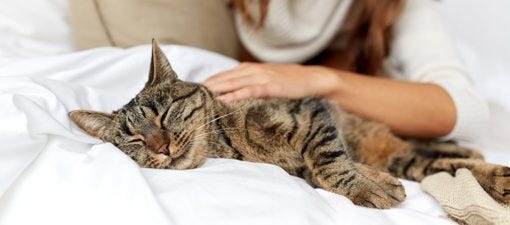
Striped, a. k. a. “mackerel,” is the most common tabby pattern. On the cat’s body coat, parallel narrow stripes occasionally gently curve and occasionally separate into bars and spots. Mackerel tabbies, also known as “tiger” cats, have an “M” shape on the middle of the forehead.
Associated breeds: Domestic Shorthair, European Shorthair, Maine Coon, Toyger
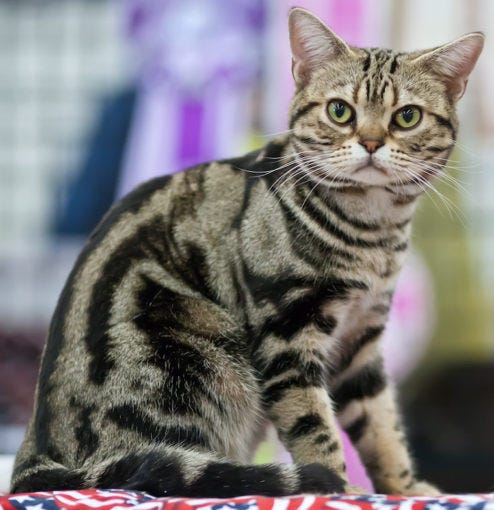
Swirled, blotched, or marbled variations of the traditional tabby pattern give the cat a tie-dyed or bullseye appearance. The classic tabby, like the mackerel tabby, has dark bars on its legs, tail, and cheeks as well as the distinctive “M” shape on its forehead.
Associated breeds: American Shorthair, Domestic Shorthair, Maine Coon
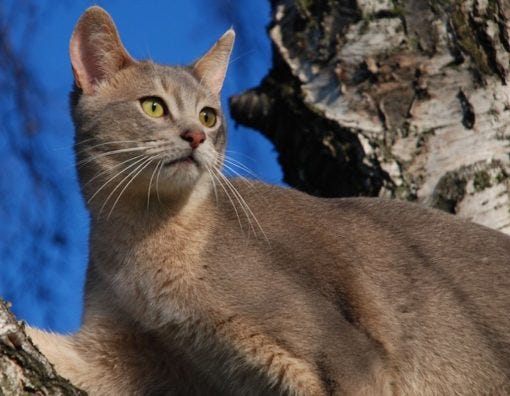
The ticked tabby is stripeless. Agouti hairs, or individual hairs with alternating bands of light and dark coloration, give the cat’s coat a “salt-and-pepper” or “sand” appearance instead. The ticked pattern is primarily displayed on Abyssinian cats.
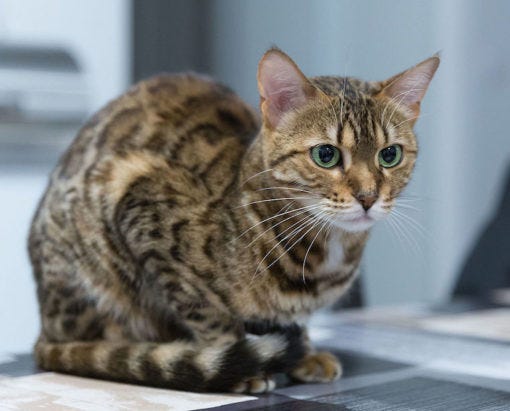
The mackerel or classic pattern of the spotted tabby’s stripes is broken up into sporadic spots on the cat’s back and flanks. Large or small, these spots are almost always darker than the surrounding fur.
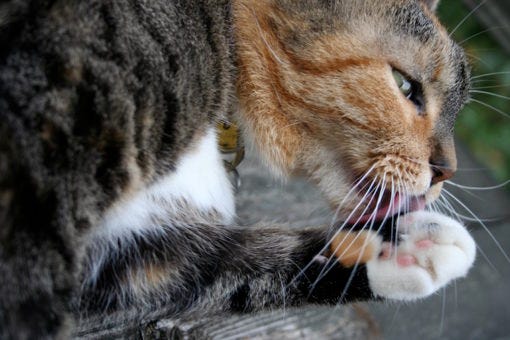
History of the Tabby Cat
Some claim that the Mau, an ancient Egyptian breed created through the domestication of the African wildcat, is where the tabby’s origins lie. The Egyptian Mau, a modern descendant with a tabby pattern, The hazy letter “M” marking on the Mau and other tabby cats’ foreheads may be the most distinguishing characteristic.
According to a Biblical legend, a tabby visited the manger. A small tabby cat cuddled up next to the infant Jesus and purred as Mary asked the stable animals to surround the manger and keep him warm. Mary gave the cat her initial, “M,” on its forehead because she was so appreciative.
Islamic legends tell of how much Mohammed loved cats. He once decided to remove a sleeve from a garment rather than wake up his cat Muezza who was sleeping on the sleeve when he had to leave for prayer. According to these myths, Mohammed gave tabbies the “M” marking to represent his adoration. In the Islamic world today, cats are still generally respected and protected; they are even allowed inside mosques.
In the 17th and 18th centuries, the word “tabby” was originally an English term for striped silk fabric. In the 1690s, it was first applied to describe striped cats. A 21-pound “English tabby” was reported to have appeared at the first cat show ever recorded, which took place in 1871 at the Crystal Palace in London.
FAQ
What type of cat is a mackerel tabby?
Striped, a. k. a. “mackerel,” is the most common tabby pattern. On the cat’s body coat, parallel narrow stripes occasionally gently curve and occasionally separate into bars and spots. Mackerel tabbies, also known as “tiger” cats, have an “M” shape on the middle of the forehead.
Are mackerel tabbies common?
Mackerel (striped) tabby Mackerel tabbies are also known as “fishbone tabbies,” likely due to the mackerel fish’s double monickering. Mackerels are the most common among tabbies.
What are the 4 types of tabby cats?
Actually, there are four standard tabby cat coat patterns: mackerel, ticked, spotted, and classic, also known as marbled. The most prevalent pattern, and the one that most people associate with tabby cats, is the mackerel one.
How much is a mackerel tabby cat worth?
Tabby cats that were bred “randomly” can cost as little as $100 or less. Purebred tabbies can set you back with $700-$1500.